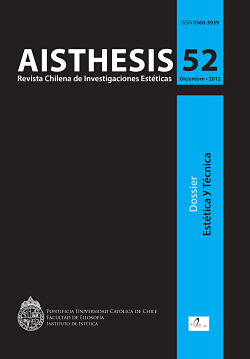Wandering children: the camera as a prison or backdoor in Largo Viaje by Patricio Kaulen
Main Article Content
Abstract
This article analyzes the film resources used in a 1967 Chilean film as an attempt to translate the urban wanderings of its protagonist –a marginal child– through its cinematic device. The film is Patricio Kaulen’s Largo viaje, precedent of the New Cinema in Chile, that is also contradictory when it comes to Aesthetics and Politics within the frames of this movement. The analysis focuses on the dialogue between the technical possibilities, its narrative decisions and the ideological forces contained in the construction of the implicit viewer of the film
Downloads
Article Details

This work is licensed under a Creative Commons Attribution-NonCommercial-ShareAlike 4.0 International License.
All contents of this electronic edition are distributed under the Creative Commons license of "Attribución-shareAlike 4.0 Internacional" (CC-BY-SA). Any total or partial reproduction of the material must mention its origin.
The rights of academic works published in this publication belong to their authors., who grant to AISTHESIS: Revista Chilena de Investigaciones Estéticas the license for its use. The management of the permits and the authorization of the publication of the images (or of any material) that contains copyright and its consequent rights of reproduction in this publication is the sole responsibility of the authors of the articles
